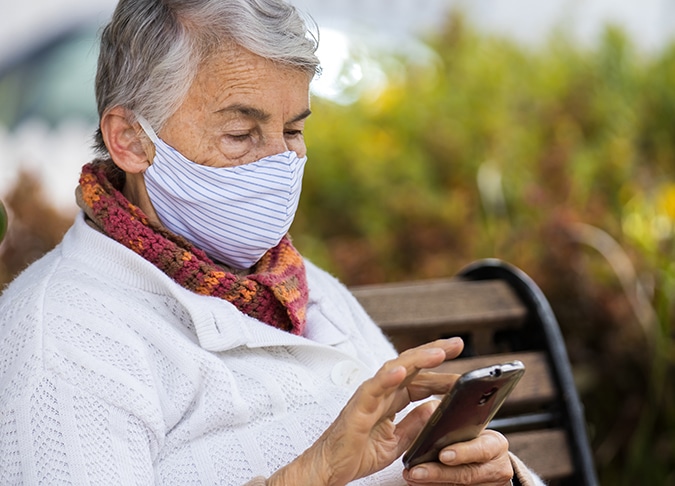
Stay Informed on Health Alerts for Your Safety

Staying informed about health alerts ensures that individuals can act quickly and safely when public health concerns like disease outbreaks and environmental hazards arise. Public health alerts guide preventive measures that protect communities.
In today’s rapidly changing health landscape, public health alerts play a vital role in informing communities about potential threats to their well-being. Whether it’s a viral outbreak, an environmental hazard, or a food contamination issue, these alerts help people make informed decisions. At SelfGood, we’re committed to providing timely and accurate information to keep you and your family safe.
Key Takeaways:
- Public health alerts notify individuals about health concerns like disease outbreaks and environmental hazards.
- Reliable sources like the CDC, WHO, and NIH offer accurate information.
- Timely alerts empower individuals to take preventive measures, such as vaccination and hygiene practices.
- Government responses, including emergency preparedness plans, help mitigate risks during public health crises.
What Are Public Health Alerts and Why Are They Crucial?

Public health alerts provide crucial information about emerging threats that could impact health and safety. These alerts are issued by agencies like the Centers for Disease Control and Prevention (CDC) and the World Health Organization (WHO), and they cover everything from contagious diseases to environmental hazards.
By alerting the public about potential dangers, health agencies help prevent the spread of diseases, protect individuals from foodborne illnesses, and mitigate environmental risks like air pollution. These alerts guide decisions on vaccination, hygiene practices, and even travel, ensuring that individuals and communities can take the necessary precautions.
Types of Public Health Alerts
- Disease Outbreaks: Alerts for contagious diseases like COVID-19, measles, or flu outbreaks ensure timely vaccination and precautionary measures.
- Environmental Hazards: These alerts notify the public of dangers like wildfires, pollution, or smog, which can have immediate health impacts, especially for those with pre-existing conditions.
- Foodborne Illnesses: Warnings about contaminated food help prevent exposure to harmful pathogens like salmonella and E. coli.
These alerts are critical because they often provide life-saving information that helps prevent widespread harm. When people respond quickly to these warnings, they help curb the impact of potential health threats.
Recent Health Alerts Impacting Communities Globally
In recent years, several health alerts have emerged globally, with varying impacts on public safety and health. Understanding how communities responded to these alerts provides valuable insights into the importance of timely information.
COVID-19 Pandemic
The COVID-19 pandemic is one of the most significant health crises in recent history. Global health agencies quickly disseminated information about social distancing, mask mandates, and vaccinations to curb the spread of the virus1. Without these timely alerts, the pandemic’s death toll could have been far worse.
Influenza Outbreaks
Each flu season, the CDC issues alerts about rising flu cases, encouraging individuals to get vaccinated and practice proper hygiene2. Flu-related deaths and hospitalizations can be mitigated with prompt public action guided by these alerts.
Environmental Alerts: Wildfires and Air Quality
In regions like California, alerts regarding air quality and wildfires are crucial for preventing respiratory issues. During wildfires, public health agencies advise individuals to avoid outdoor activities and wear protective masks, especially those with asthma or other respiratory conditions3.
How Disease Outbreaks Are Monitored and Controlled
Health organizations use surveillance systems to track and control disease outbreaks. Monitoring patterns of illness and infection enables health agencies to issue timely alerts and implement containment measures such as quarantines or travel advisories.
Steps in Monitoring and Control
- Surveillance: Health agencies collect data from hospitals, clinics, and labs to detect potential outbreaks.
- Public Alerts: Once an outbreak is confirmed, agencies like the CDC issue health alerts, providing guidance on vaccinations, hygiene, and prevention.
- Containment: If the disease poses a significant risk, governments may implement quarantines, travel restrictions, or vaccination campaigns to control its spread.
Monitoring and responding quickly to health threats minimizes their impact, preventing the disease from spreading uncontrollably.
Government Responses to Health Alerts
Governments play a crucial role in mitigating the effects of public health emergencies by coordinating resources, enforcing regulations, and providing financial support during crises.
National Emergency Preparedness Plans
Governments around the world have developed emergency preparedness plans to respond quickly to health alerts. These plans often include:
- Vaccine Rollouts: Rapid distribution of vaccines to vulnerable populations.
- Healthcare Infrastructure: Strengthening hospitals and medical facilities to handle surges in patients.
- Economic Support: Providing financial aid to individuals and businesses affected by lockdowns and other public health measures.
Effective government action can significantly reduce the impact of public health crises, allowing communities to recover more quickly.
How Public Health Alerts Shape Public Behavior

Public health alerts do more than inform; they shape behavior. These alerts play a critical role in guiding the public to take specific actions that help protect themselves and others during health crises.
Influencing Public Behavior
- Preventive Actions: Alerts encourage people to get vaccinated, stay home during outbreaks, or practice good hygiene.
- Changing Daily Habits: During the COVID-19 pandemic, health alerts led to widespread mask-wearing and social distancing, which significantly reduced transmission rates.
Alerts have a profound psychological impact on how people behave during health emergencies. By issuing clear, actionable guidance, health authorities help reduce the severity of outbreaks and protect vulnerable populations.
The Role of Technology and Social Media in Spreading Health Alerts
Technology has revolutionized how public health alerts are shared. Social media platforms and mobile notifications can spread information faster than traditional news sources, reaching millions of people in real-time.
How Technology Enhances Public Health Communication
- Mobile Alerts and Apps: Many health organizations have developed apps that send real-time alerts about local health risks. These apps allow users to stay updated on disease outbreaks, natural disasters, and other emergencies.
- Social Media Influence: Platforms like Twitter and Facebook are used by health agencies to share critical information. However, the spread of misinformation can also be a concern, making it essential to rely on official sources for accurate updates.
Technology plays a dual role—it facilitates the rapid spread of accurate information, but it also contributes to the spread of misinformation. Relying on trusted sources like the CDC and WHO is essential for staying properly informed.
How to Stay Informed About Public Health Alerts and Protect Yourself
Staying informed about health alerts is key to protecting yourself and your loved ones. Here are some ways you can ensure you’re receiving reliable information.
Tips for Staying Informed
- Follow Reliable Sources: Subscribe to alerts from trusted organizations like the CDC, WHO, and local health departments.
- Set Up Notifications: Many apps offer push notifications that provide updates about disease outbreaks and environmental hazards in your area.
- Take Preventive Action: Depending on the alert, follow recommended guidelines, such as getting vaccinated, avoiding certain foods, or practicing proper hygiene.
By taking proactive steps and staying informed, you can protect yourself and those around you from emerging health risks.
Final Thoughts
Public health alerts are essential tools for protecting ourselves and our communities from disease outbreaks, environmental hazards, and other public health risks. They provide timely, reliable information that allows individuals to make informed decisions about their health and safety. Staying informed through trusted sources, taking preventive actions, and following government guidelines are key to navigating today’s fast-changing health landscape. By staying vigilant, we can help prevent the spread of illness and safeguard our health.
Frequently Asked Questions
What is the difference between a public health warning and an advisory?
A public health warning indicates an immediate threat to public health that requires urgent action, whereas an advisory provides general information about potential risks and preventive measures.
How do I know if a health alert applies to my region?
Health alerts are often region-specific. You can check local health department websites or set up notifications on mobile apps that track health alerts for your area.
Where can I find the most reliable health alerts for disease outbreaks?
The most reliable sources for health alerts are government agencies such as the CDC, WHO, and NIH. Subscribing to their alerts ensures you receive the most accurate and up-to-date information.
Sources:
- CDC. (2021). How CDC Responds to Outbreaks. https://www.cdc.gov/outbreaks/
- CDC. (2020). Flu Season: Frequently Asked Questions. https://www.cdc.gov/flu/about/season/flu-season-2020-2021.htm
- WHO. (2021). Wildfires and Air Pollution. https://www.who.int/air-pollution/




